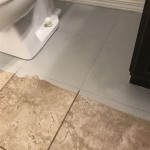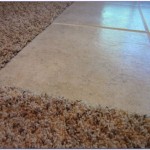How to Lay Ceramic Tile In a Kitchen Sink Area
Laying ceramic tile in a kitchen sink area involves careful planning, precise execution, and a commitment to detail. This area is subject to frequent water exposure, making proper installation crucial to prevent water damage, mold growth, and eventual structural issues. This article provides a comprehensive guide on how to successfully lay ceramic tile in the kitchen sink area, covering material selection, preparation, installation, and finishing.
Key Considerations Before Starting
Prior to commencing the tiling project, several factors must be carefully considered. These pre-installation decisions will significantly impact the longevity and aesthetic appeal of the finished product.
Choosing the Right Tile: Ceramic tiles offer a variety of options in terms of size, shape, color, and finish. For a kitchen sink area, selecting moisture-resistant tiles is paramount. Porcelain tiles are generally preferred due to their low water absorption rate. Glossy or semi-glossy finishes are easier to clean and less prone to staining. The size of the tile should be proportionate to the sink area. Smaller tiles might be suitable for intricate designs or confined spaces, while larger tiles can create a more streamlined look and reduce grout lines.
Substrate Evaluation and Preparation: The substrate, which is the surface onto which the tiles will be adhered, must be structurally sound, clean, and level. Common substrates in kitchen sink areas include plywood, cement board, or existing tile. If the substrate is plywood, ensure it is exterior-grade and at least ¾ inch thick. Cement board provides a superior surface for tiling due to its water resistance and stability. Any unevenness or imperfections in the substrate must be addressed before tiling. This may involve applying a leveling compound or patching holes and cracks. Clean the substrate thoroughly to remove any dust, debris, or grease that could interfere with adhesion.
Planning the Layout: A well-planned layout is essential for a professional-looking tile installation. Before applying any adhesive, dry-lay the tiles in the desired pattern to visualize the final appearance. This step allows for adjustments in spacing and tile placement to avoid awkward cuts or narrow slivers of tile. Start by finding the center point of the sink area and working outwards. Consider the placement of any trim pieces or decorative accents. Use tile spacers during the dry-lay to maintain consistent grout lines. Mark the tile layout on the substrate with a pencil or marker to serve as a guide during the installation process.
Materials and Tools Needed
Having the right materials and tools readily available will streamline the tiling process and ensure accurate results. The following is a comprehensive list of essential items:
Ceramic Tiles: The quantity of tiles needed will depend on the size of the sink area and the chosen tile size. It's always recommended to purchase extra tiles to account for cuts, breakage, and future repairs.
Thin-set Mortar: Thin-set mortar is the adhesive used to bond the tiles to the substrate. Choose a mortar specifically formulated for ceramic or porcelain tiles and suitable for wet areas. Follow the manufacturer's instructions for mixing the mortar to the correct consistency.
Grout: Grout fills the spaces between the tiles and provides a watertight seal. Select a grout color that complements the tile and suits the overall design. Epoxy grout offers enhanced stain resistance and durability compared to cement-based grout, making it a good choice for kitchen sink areas.
Tile Sealer: Applying a tile sealer helps to protect the tile and grout from staining and water damage. Choose a high-quality sealer designed for use in wet areas. Follow the manufacturer's instructions for application and reapplication.
Tools:
- Tile Cutter or Wet Saw: A tile cutter is used for making straight cuts, while a wet saw is necessary for more complex cuts or cutting harder tiles.
- Notched Trowel: A notched trowel is used to apply the thin-set mortar evenly to the substrate. The size of the notches will depend on the tile size and the manufacturer's recommendations.
- Rubber Grout Float: A rubber grout float is used to apply and pack the grout into the grout lines.
- Grout Sponge: A grout sponge is used to clean excess grout from the tile surface.
- Tile Spacers: Tile spacers ensure consistent grout lines between the tiles.
- Level: A level is used to ensure the tiles are installed evenly.
- Measuring Tape: A measuring tape is used to accurately measure the sink area and tile dimensions.
- Pencil or Marker: A pencil or marker is used to mark the tile layout on the substrate.
- Safety Glasses: Safety glasses are essential for protecting the eyes from debris during cutting and grinding.
- Gloves: Gloves protect the hands from mortar and grout.
The Tile Installation Process
The tile installation process requires careful execution to ensure a professional and long-lasting result. Following these steps will help to achieve a successful outcome.
Applying Thin-set Mortar: Begin by mixing the thin-set mortar according to the manufacturer's instructions. Use a notched trowel to apply the mortar evenly to the substrate, covering a small area at a time. Hold the trowel at a 45-degree angle and apply enough pressure to create consistent ridges in the mortar bed. The size of the notches on the trowel should match the recommended size for the chosen tile. Avoid applying mortar to a large area at once, as it may dry out before the tiles are installed.
Setting the Tiles: Carefully place the tiles onto the mortar bed, aligning them with the layout marks. Use tile spacers to maintain consistent grout lines. Press each tile firmly into the mortar, ensuring good contact. For larger tiles, use a rubber mallet to gently tap the tile and ensure it is fully embedded in the mortar. If any mortar squeezes up between the tiles, remove it immediately with a damp sponge. Periodically check the level of the tiles with a level and make any necessary adjustments.
Cutting Tiles: Cutting tiles accurately is crucial for achieving a seamless installation. Use a tile cutter for making straight cuts. Score the tile along the desired cut line with the tile cutter, then apply pressure to snap the tile along the score. For more complex cuts or cutting harder tiles, use a wet saw. Wear safety glasses when operating a wet saw. Carefully guide the tile through the saw blade, following the desired cut line. Smooth the edges of cut tiles with a rubbing stone or diamond sanding pad to remove any sharp edges.
Allowing the Mortar to Cure: Once all the tiles are installed, allow the thin-set mortar to cure completely before proceeding to the next step. The curing time will vary depending on the type of mortar and the environmental conditions. Generally, it is recommended to wait at least 24 to 48 hours before grouting. Avoid walking on the tiles during the curing process.
Grouting the Tiles: After the mortar has cured, remove the tile spacers and clean the grout lines. Mix the grout according to the manufacturer's instructions. Use a rubber grout float to apply the grout to the tile surface, working it into the grout lines at a 45-degree angle. Pack the grout firmly into the lines to ensure a complete fill. Remove excess grout from the tile surface with the grout float, holding it at a 90-degree angle. After approximately 15 to 30 minutes, use a damp grout sponge to clean the remaining grout residue from the tile surface. Rinse the sponge frequently in clean water. Be careful not to remove too much grout from the grout lines.
Final Cleaning and Sealing: Allow the grout to dry for the recommended time, typically 24 to 48 hours. Once the grout is dry, a haze may remain on the tile surface. This can be removed with a grout haze remover, following the manufacturer's instructions. Finally, apply a tile sealer to protect the tile and grout from staining and water damage. Apply the sealer evenly to the tile and grout lines, using a clean cloth or applicator. Allow the sealer to dry completely before using the sink area.

Kitchen Tile Basics Installing Around A Sink

How To Install A Tile Counter Top

Installing Tile Countertops Backsplash Family Handyman

Diy Kitchen Sink Backsplash On The Upcycle

Adding Floor Tiles Under Your Kitchen Sink Home Staging In Bloomington Illinois

How Tile A Backsplash Choosing And Installing The Rubi Blog Usa

Kitchen Tile And Sink Installation Part 1

Herringbone Floor Tile In My Kitchen The Inspired Room

Kitchen Tile Makeover Sarah Joy

Ceramic Tile Kitchen Floor Pros Cons And Best Designs Stone Depot
Related Posts








